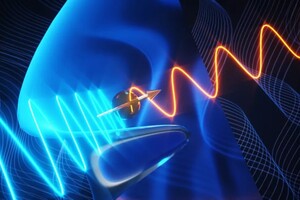Particle can be the key to understanding dark matter.

Scientists have discovered a new particle that is a magnetic relative the Higgs boson. But if the latter required the power of the Large Hadron Collider, a new particle, called the Higgs axial boson, was discovered using an experiment that could be conducted on a small kitchen countertop, according to Live Science.
This a new particle can be a candidate for dark matter – a mysterious substance, which accounts for 85% of the universe, but which is manifested only by gravity.
Read also: Physicists managed to recreate the exotic “particle X” of the Big Bang
“When my student showed me the results, I thought she was wrong. “It's not every day that you find a new particle sitting on your desk,” said lead author Kenneth Birch of Boston University.
The main difference between the axial Higgs boson and its brother is that it has a magnetic force that creates a magnetic field. That is, a more complex theory is needed to describe it than for the Higgs boson.
In the Standard Model of Particle Physics, particles arise from various fields that permeate the universe, and some of them form its fundamental forces. For example, photons mediate electromagnetism, and massive particles known as W and Z bosons mediate the weak nuclear interaction that controls nuclear decay at the subatomic level. However, when the universe was young and hot, electromagnetism and weak interaction were one, and all these particles were almost identical. As the universe cooled, the electroweak force split, causing the W and Z bosons to gain mass and behave very differently than photons. This process has been called “symmetry breaking” by physicists.
These particles have become so heavy by interacting with a field known as the Higgs field. The perturbations in this field gave rise to the Higgs boson and gave weight to the W and Z bosons.
According to Birch, the Higgs axial boson arose when a certain set of waves was simulated in quantum matter at room temperature. Scientists then used light scattering to observe this particle. “At first, we just studied the light-scattering properties of this substance. But then we discovered anomalous changes that hinted at the existence of something new. And as a result, we discovered the axial Higgs boson, “says Birch. is still consistent with modern particle physics. “This particle could potentially explain the existence of dark matter, but it requires a new theory that is consistent with existing particle experiments and the fact that new particles can be seen. , which have not yet been discovered, “says Birch. Scientists made the discovery a year ago, but have published data only now. All this time, researchers have been verifying the results.




